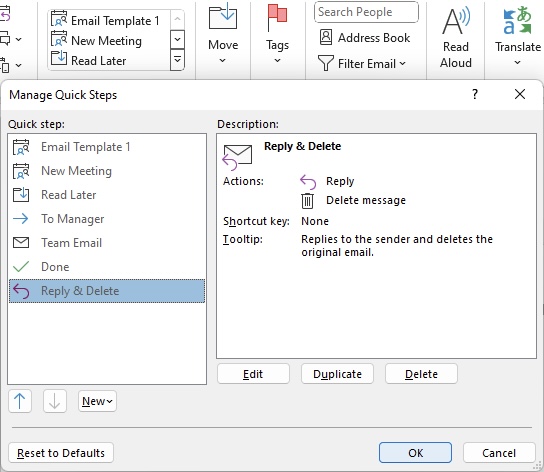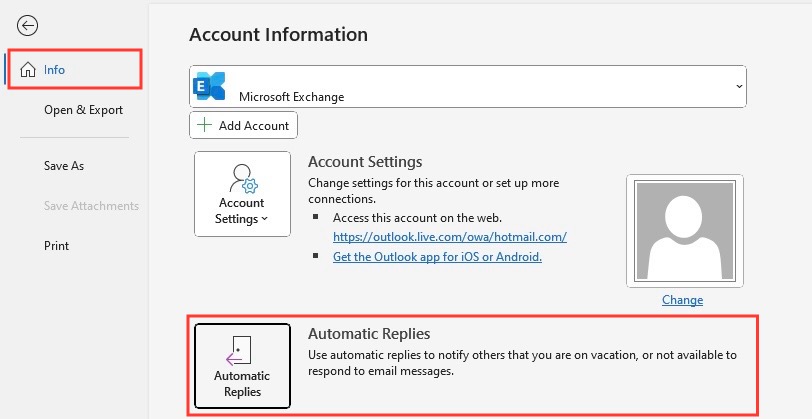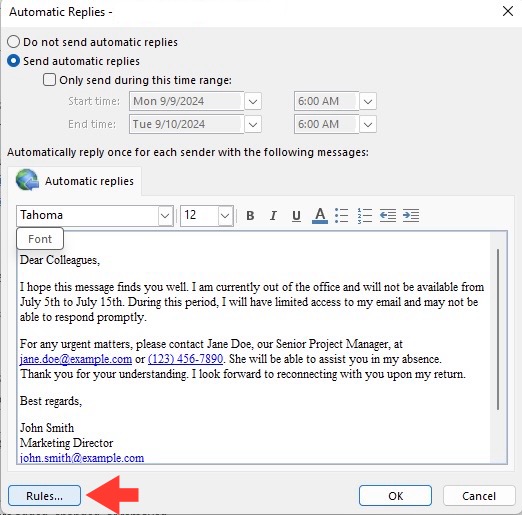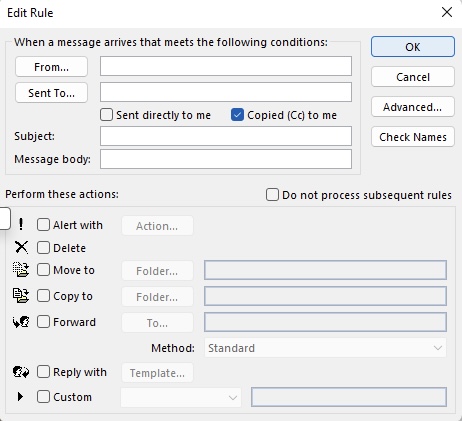In the realm of professional communication, mastering the subtle details of using Microsoft Outlook reveals our ability to navigate correspondence with finesse. Understanding when and how to use Reply vs. Reply All in Outlook is pivotal—not just in preserving the flow of conversation, but in maintaining discretion as we engage in digital discourse. It’s an art and a science to determine which button to press, akin to knowing whether to whisper a reply or address a whole room.
Key Takeaways
- Using “Reply” in Microsoft Outlook responds only to the sender, ensuring a private conversation or excluding non-essential recipients from the communication chain.
- The “Reply All” option includes all original recipients, which is appropriate when the response is pertinent to everyone or when keeping all parties informed is necessary.
- Careful consideration should be taken before using “Reply All” to prevent the dissemination of confidential information and avoid overwhelming recipients and email servers with unnecessary messages.
The Importance of Using the Right Option
Grasping the critical importance of selecting the right response option in emails is not an overstatement; it’s a necessity for anyone who aims to communicate effectively. This choice has profound ramifications on information flow and confidentiality. The correct use of “Reply” versus “Reply All” ensures that conversations remain relevant to the appropriate parties, preserving the integrity of workplace communication. By being cautious with these options, we shield ourselves from the pitfalls of miscommunication and uphold the standard of professional decorum that is expected in modern-day business interactions.
Table of Contents
Understanding the Functions
What ‘Reply’ Really Means
When I select “Reply” in Outlook, I’m initiating a one-to-one connection, directing my response solely to the individual who sent the original email. This focused approach is ideal for responses that are intended for the sender’s eyes only. It’s the electronic equivalent of pulling someone aside for a private chat after a group meeting. I use “Reply” to avoid flooding others’ inboxes with irrelevant information, making sure my message remains concise, directed, and targeted.
The Implications of ‘Reply All’
Opting for “Reply All” is the digital equivalent of addressing everyone in a physical meeting; it broadcasts my reply to all the recipients of the original message. This function keeps entire groups in sync, ensuring everyone is up to date on the conversation. However, it also carries the weight of responsibility – to avoid overwhelming people with unnecessary messages and to protect privacy. I’m always judicious with “Reply All,” fully aware that a simple misstep can lead to a cascade of emails, often termed an ’email storm,’ and potentially expose confidential information to those not meant to see it.
When to Use Reply vs. Reply All
Professional Scenarios that Call for Caution
In professional settings, using “Reply All” demands a cautious approach. I consider scenarios such as company-wide announcements, team updates, or project discussions. These require careful judgment – for instance, when a response is necessary for team transparency or when an individual acknowledgment is more suitable. Before clicking “Reply All,” I assess if my message adds value to the conversation for all recipients. I take extra care during sensitive dialogues, like performance feedback or negotiations, where privacy is paramount and a direct “Reply” is more appropriate.
Best Practices for Collaborative Communication
In collaborative environments, clear communication is the bedrock of success. I strive to follow best practices that foster effective teamwork and clarity. This begins by utilizing “Reply All” judiciously to keep the entire team on the same page for group decisions, discussions, and project updates. It’s also crucial to ensure that my contributions are meaningful, not just noise in my colleagues’ inboxes. I remember to recap points for those who may have joined the conversation late and to clearly delineate actionable items. These guidelines help to cultivate an environment of mutual understanding and respect.
Potential Pitfalls of Misusing Reply All
Privacy Blunders and Oversharing
One of the gravest mistakes we can make in email communication is a privacy blunder due to oversharing. This happens when “Reply All” is used without careful consideration, potentially exposing sensitive information meant for a specific individual to a broader audience. Such an error doesn’t just betray confidentiality; it can also tarnish my reputation and credibility. Transparency is key, but so is discretion. Therefore, I am always mindful of the content and the recipient list before hitting send, ensuring that private data remains secure and emails are as intentional as any spoken word in a professional space.
Overloading Inboxes: A Digital Faux Pas
Overusing “Reply All” can contribute to a phenomenon widely dreaded in workplaces: inbox overload. This digital faux pas occurs when recipients are bombarded with emails that lack relevance to their roles, leading to frustration and the possibility of overlooking critical communications amidst the deluge. To prevent being the culprit of such inconvenience, I am careful to analyze the necessity of including everyone in my responses. My rule of thumb is to prioritize brevity and relevance—contributing to a clean, efficient inbox culture rather than cluttering it.
Steps to Ensure Proper Use in Outlook
Configuring Settings for Optimal Use
Configuring Outlook to streamline my email responses is straightforward and can spare me from potential missteps. Within Outlook settings, I can easily adjust whether “Reply” or “Reply All” is my default action. The choice I make here could be pivotal, as it directly influences my default response mode—thus reducing the chances of an accidental ‘all’ reply. It is prudent to tailor this setting to match my most common email tasks, be it collaborative communication or dealing with sensitive one-on-one interactions. Remember, a well-configured inbox is a step towards impeccable email etiquette.
Tools to Streamline Your Email Responses
Outlook offers several tools to aid us in streamlining email responses and enhancing productivity. These include Suggested Replies, which allow for swift acknowledgment with pre-written snippets suitable for common email scenarios.
Quick Steps is another feature that lets me create custom email templates for recurring responses, saving time and maintaining consistency in my communication.
Additionally, the use of @mentions is tremendously helpful to draw the attention of specific individuals within a group email.
Tips and Tricks for Effective Email Management
Shortcut Methods for Quick Actions
Time is of the essence, and in Outlook, shortcut keys are my lifeline for swift email management. I use shortcuts like Ctrl + R to reply and Ctrl + Shift + R to reply to all, which significantly cut down the time it takes to respond to emails. Similarly, when forwarding a message, Ctrl + F is my go-to. For actions I perform frequently, Quick Steps are invaluable; I create custom sequences that execute multiple actions with a single click. By familiarizing myself with these shortcuts and Quick Steps, I’ve enhanced my email productivity, ensuring my communication is as efficient as it is effective.
Employing Rules for Automated Replies
To further refine my email management, I create rules within Outlook for automated replies and message sorting. Establishing rules can dictate specific actions when emails meet certain conditions—like replying with a predefined message for common inquiries or directing emails from key contacts into designated folders. This automation not only saves time but also helps me maintain a clean and organized inbox. It’s particularly useful during out-of-office periods, guaranteeing that those who contact me receive an immediate acknowledgment and know when to expect a follow-up.
To customize your Automatic Replies:
STEP 1: Go to File > Info > Automatic Replies.
STEP 2: Check the “Send automatic replies” box and click on Rules.
STEP 3: Click on Add Rule. Edit the Rule to meet your conditions. Click OK to save.
FAQs on Email Response Etiquette
How Do I Change My Default Reply Setting?
To change my default reply setting in Outlook, I follow these steps:
- Access my email account and click on the gear icon in the upper right corner.
- Scroll down and click ‘View all Outlook settings.’
- Choose ‘Mail’ followed by ‘Compose and reply.’
- Under ‘Reply or Reply all,’ I select my preferred default response.
- Save the changes to update my settings.
This action shifts my default reply mode, shaping my email interactions henceforth.
Can I Set Up Automatic Rules for Replies and Forwards?
Yes, I certainly can set up automatic rules for replies and forwards in Outlook. It allows me to manage my emails by creating specific criteria to trigger these actions. For instance, I can automatically forward all emails from a manager to another team member or send automated replies for specific types of inquiries. The ‘Rules’ feature, found under the ‘Settings’ menu, is where I set these parameters, keeping my email communications efficient and consistent, even when I’m away from my desk.
What Should I Consider Before Clicking ‘Reply All’?
Before I click ‘Reply All,’ I consider several factors to ensure my response is appropriate for all recipients. These include relevance (does everyone need to see this?), confidentiality (am I sharing sensitive information?), and productivity (will this clutter others’ inboxes?). I also evaluate the context of the email thread and the potential for creating an email storm. Careful deliberation before selecting ‘Reply All’ helps me maintain professional courtesy and effective communication.
John Michaloudis is a former accountant and finance analyst at General Electric, a Microsoft MVP since 2020, an Amazon #1 bestselling author of 4 Microsoft Excel books and teacher of Microsoft Excel & Office over at his flagship MyExcelOnline Academy Online Course.














